Watching the Tournament of Roses Parade held in Pasadena, California is an annual New Year’s Day tradition. This year was especially interesting for theme park fans because the 2017 Rose Parade featured a working roller coaster float. The city of Downey’s Gold Rush float won the Governor’s Trophy for best depiction of life in California. We recently got to talk with Kelly Roberts to find out how he and his team designed and built a fully-functional roller coaster on a tiny, moving parade float. Thanks to Kelley for taking the time to answer our questions.
C101: For those who don’t know, can you please briefly introduce yourself – who are you and what do you do?
My name is Kelley G. Roberts Jr. I started my career at Knott’s Berry Farm in 1988 as a Ride Operator where I worked for a few years until I was promoted to a Ride Maintenance Assistant in 1991. I was promoted to a full Ride Maintenance Technician in 1992 and then in 2005 I was again promoted to a Supervisor of Ride Maintenance. I finished my career at Knott’s Berry Farm in November of 2014 after 26-1/2 years. I now work for the State of California’s Division of Occupational Safety & Health (DOSH) the Amusement Ride and Tramway Unit as an Associate Engineer.
C101: Where did the idea come from to put a working roller coaster on a parade float?
How did I come up with the idea to put a working roller coaster on a Rose Parade float? The theme of the parade was titled Echoes of Success and I couldn’t think of a better theme for our float then what was successful in California: the Gold Rush at Sutter’s Mill. So we titled our float The Gold Rush and to add an element of excitement to it a fully functioning custom-built working roller coaster.
C101: How much time and effort went into designing the coaster? Did you plan it out on paper or use any software or CAD programs?
Well, there’s a lot of elements you have to think of when just designing a roller coaster in general, but putting one on a moving platform and still have the element of a Rose Parade float was a challenge in itself. I first started designing it in 1989 and it took me about 10 years to figure out all of the angles, the curves, the clearances, and how the movement of the actual float down the parade route with all the different angles, starts and stops would affect the operation of the coaster. I put my first roller coaster on a Rose Parade float for the 2000 parade.
Here’s a video of the Future Unlimited float from December 1999:
The Gold Rush float was designed strictly on graph paper and then a “1 inch equals a foot” model was built to confirm the design.
Here’s a video of the rose parade roller coaster float model:
The track rails were computer bent and the crossed ties were computer cut. Then I took the radii and straight sections of pipe and built each section one at a time before putting them up.
C101: How did you ensure the coaster would be safe to ride and did you perform any testing?
Well, as we built it every level of safety was thought of. For example, the track connections had chill rings and a safety strap installed so in the event of an incident it would stay together. The coaster car was designed in a way that you would need to have two guide and two up-stop wheels fail before the car could come off the track.
As for testing, we tested the ride without weight for 25 cycles then inspected the track and car and then proceeded to add weight at 100 pound increments. We would test run for 15 cycles and continue with the inspections of the track and car and when we got up to 350 pounds then we cycled the coaster 50 cycles before allowing a person to ride.
C101: What were some of the biggest challenges? I imagine the total mass of the track and supports was a factor? Or getting it to work while the float was in motion? Or keeping clearances to overpasses or wires along the parade route?
There were several challenges in building this float. Clearances were a major issue as not only did you have to have clearances of the track to the base of the float but you also had to have inside clearances all the way around since myself and Jason Redfox would be taking turns riding it in the parade. In order to keep the coaster running the driver of the float needed to be aware of where the coaster was on the track before he could accelerate or stop suddenly, this way the coaster would not lose momentum in three key areas.
C101: What was it like riding for the first time? Was it smooth? Were you nervous?
The first person to ride was Mike Negrete who is one of the builders on my construction crew and the float driver. This coaster was a coaster that you work with or it will work you. There was nearly 300 feet of track on a 50 foot by 18 foot wide surface so all the dips had to be perfect radii in order to make all the clearances work. It was a little nervous riding the first few times since you only have inches of clearance in some areas but it was fun!
C101: What happened to the float after the parade?
Well, it returns to Downey where it’s on display for 3 or 4 days and then it returns to its building where it will sit for approximately one month where we will have one last party down at the float site for the construction crew who will ride it for a little bit and then we will cut it apart into sections and it’ll be stored away
C101: I always have to ask, do you ride real roller coasters and if so what are your favorites?
Do I ride roller coasters? Hell yes I do! I have a few favorites including Xcelerator and Silver Bullet at Knott’s Berry Farm, after all it is the park I started my career at, plus The Gold Rusher at Six Flags Magic Mountain and Big Thunder at Disneyland in California.
C101: Thanks for taking the time to answer our questions. Any last thoughts or anything you would like to add?
I would also like to mention the names of my construction crew that without their help it would not have been possible.
Jason Redfox – Builder and Floral Director
Andrew Malarkey – Assistant Construction Chairman
Mike Negrete – Builder and Float Driver
Carl Johnson – Builder
Jeff Shadic – Builder and Decoration Chairman
Jeremy Clifton – Builder and Co-Driver (the float driver’s eyes)
Omar Camacho – Builder and driver/owner of Titan Transportation, the official towing company for Downey Rose Float Association.
Scott Roberts – Builder
Thom Neighbors – Final Art Work
Thanks again to Kelley for giving us more insight on how to build a roller coaster on a parade float.
You can learn more about the Downey Rose Float Association here.
Special thanks to America’s Coaster Network for the awesome pictures and video of the coaster in action. Check them out on Facebook.
Thanks to Bicycle Crossroads for letting us use a clip of their excellent video of the float, which can be seen here.

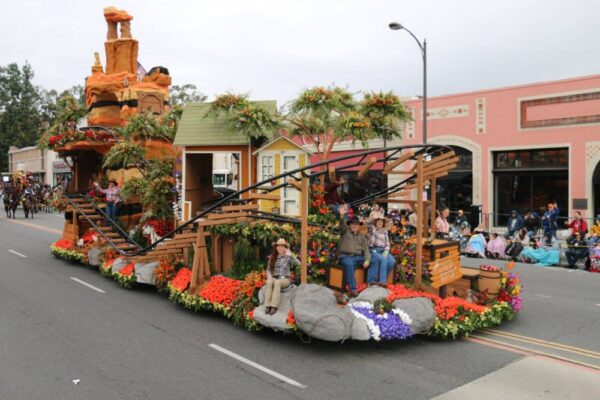
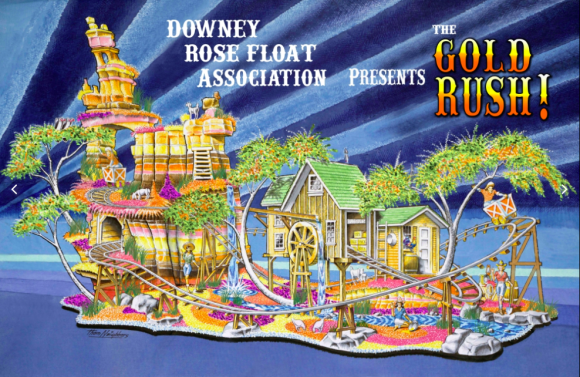
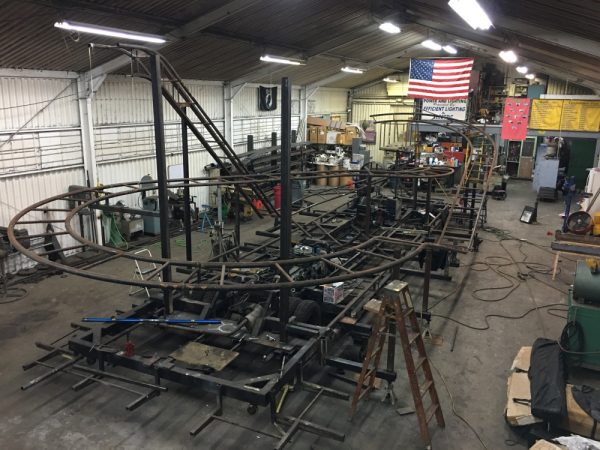
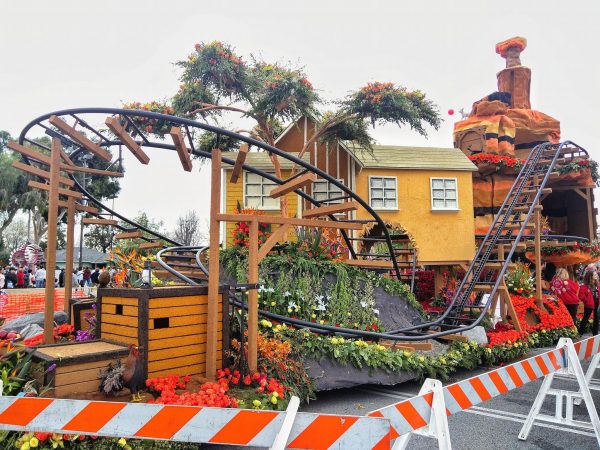
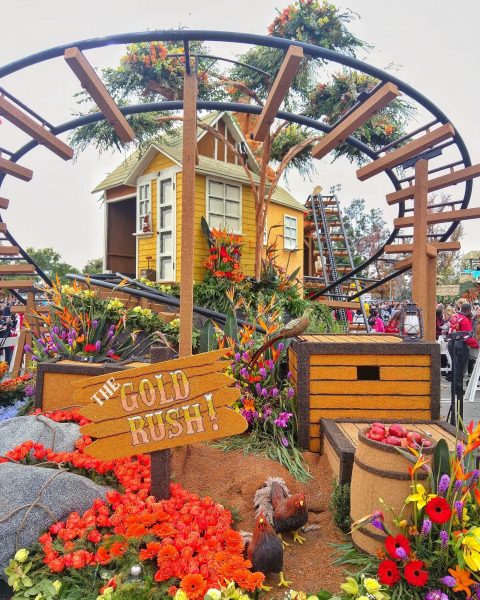
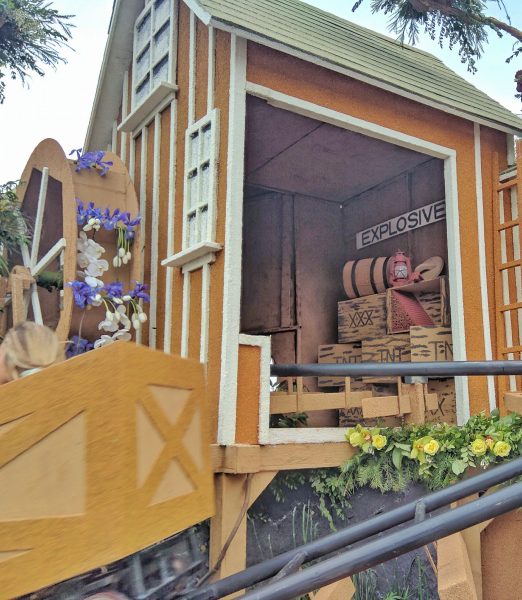
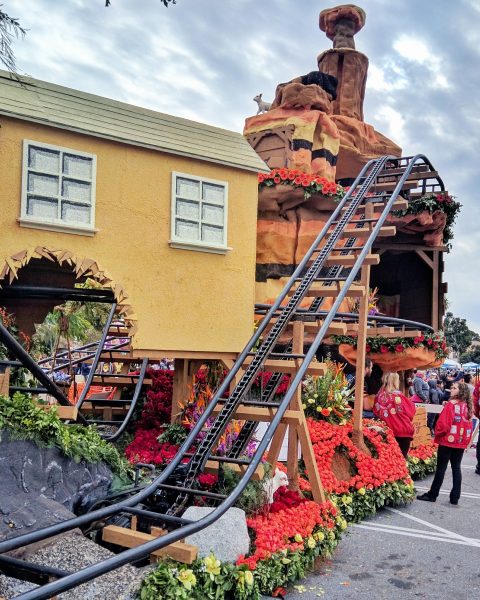
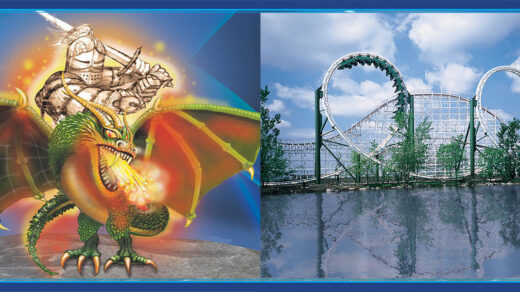
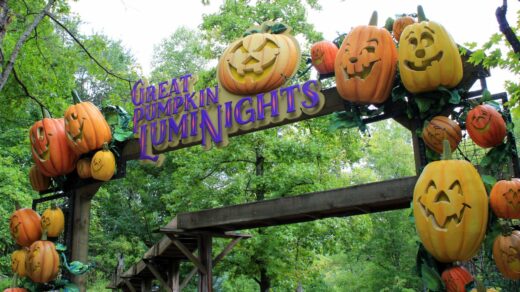
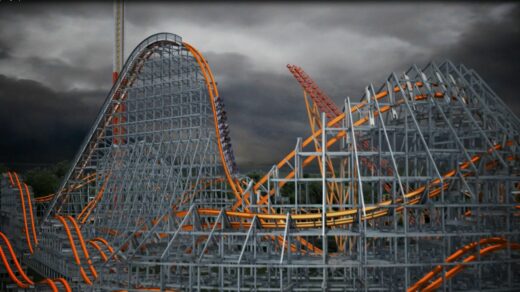





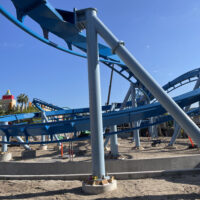





Recent Discussion